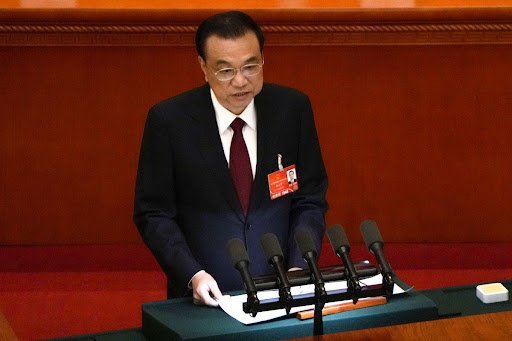Beijing announces lowest growth target in 30 years amid rising challenges
Premier Li Keqiang speaks in the National People’s Congress during the Two Sessions. Photo: South China Morning Post
China recently unveiled its new economic projections in its annual Two Sessions meeting, which draws delegates from across the country to announce national economic policies for the upcoming year. Although it is a largely symbolic meeting, projections include targets for GDP growth, employment, inflation, deficits, and government spending.
Despite targets for employment and inflation remaining the same, China announced an annual growth rate of 5.5 percent, far lower than its 8 percent average over the last few years. This is the lowest official growth target in three decades, reflecting a series of mounting economic challenges to Beijing.
The National Economic Planning Agency stated that “achieving this goal will require arduous efforts.” Many economists have contended that in spite of being a seemingly low target, it may prove a tougher challenge than the 6 percent goal in 2021.
Beijing’s expressed goals will prioritize growth, job creation, and increased social welfare. Premier Li Keqiang stated that, “in our work this year, we must make economic stability our top priority and pursue progress while ensuring stability.”
With the Chinese Communist Party’s 20th National Congress set for the fall, Beijing is focused on keeping its domestic population satisfied and stabilizing employment levels. Xi Jingping is also poised for a third term.
The primary challenges to achieving this level of growth include China’s real estate crisis, its strict “zero-COVID” strategy, and looming economic fallout from the Ukraine crisis.
Li’s opening remarks at annual legislative meetings mirrors these predictions, as he emphasized that “China is under the triple pressures of shrinking demand, disrupted supply and weakening expectations.” To meet the new growth rate, China will need to increase lending and government spending, which may reverse efforts to lower the debt burden last year.
In 2020, Beijing began imposing strict limitations on excessive borrowing by developers in an attempt to reduce their leverage and address rising housing prices.
These reforms, which were similarly enforced in tech, adversely impacted consumer sentiment and wage growth in the short run. China’s largest developers have experienced significant debt burdens as a result. The decrease in home buyers has negatively impacted the construction industry and reduced land sales.
Arguably, the most significant obstacle to growth will be China’s “zero-COVID” policy that has resulted in rigid lockdowns and caused a severe downturn in consumer spending. Tourist spending, for example, has decreased by over 44 percent from its figures in 2019. Beijing will likely have to adopt a living-with-COVID approach before its growth can return to previous levels.
A Shanghai shopping district. Photo: Aly Song / Reuters
While the report did not mention the Ukraine crisis directly, its effects are nevertheless an important obstacle for Chinese policy in the upcoming year. Sanctions on Russia have already impacted key supply chains, and prices of commodities such as oil and wheat have risen sharply. The crisis has also prompted a shortage of neon, a vital chemical in the production of microchips.
Increasing consumer spending will require more stimulus and general government spending in 2022. Total central government expenditures for the general public budget are set to increase by 14.3 percent, with a spending increase of over $316.5 billion USD. In particular, social welfare and education spending will rise by 10 percent according to the official report.
Beijing will delegate spending, mostly social and infrastructural, to provincial and local governments through expanding transfers of money by 18 percent. Potential reforms include greater support for pension funds, aid to rural families, and the development of rental housing units.
China has outlined a similar rise in spending for its military budget by 7.1 percent to roughly $229 billion USD. This will include expanding the navy and developing advanced missile technology, among other modernizing efforts. Li was direct in his explanation that “the security threats China is facing and the demands for national defense capability enhancement caused by those threats are the driving factors,” adding that, “over the past year, the U.S. also rallied its allies and partners around the world to provoke and confront China militarily.”
It is clear that in the face of a series of politica, social, and economic obstacles Beijing remains steadfast in its commitment to prioritizing growth. Its ability to do so, however, is largely conditional on changing rigid domestic policies to stimulate the economy that have dampened consumer spending and investment.


